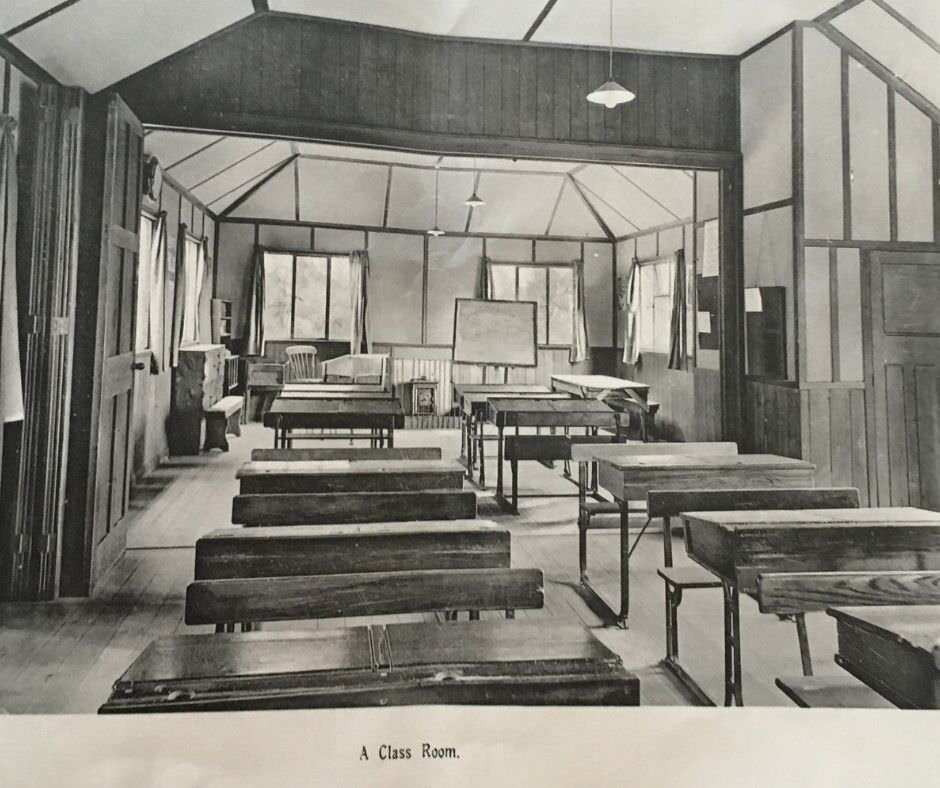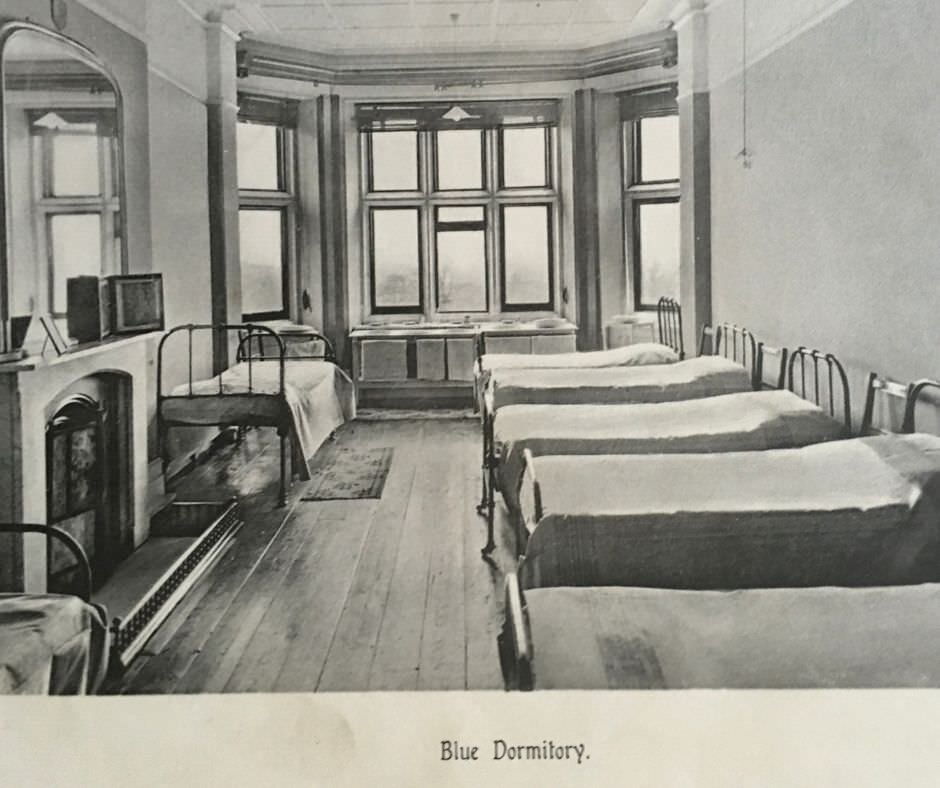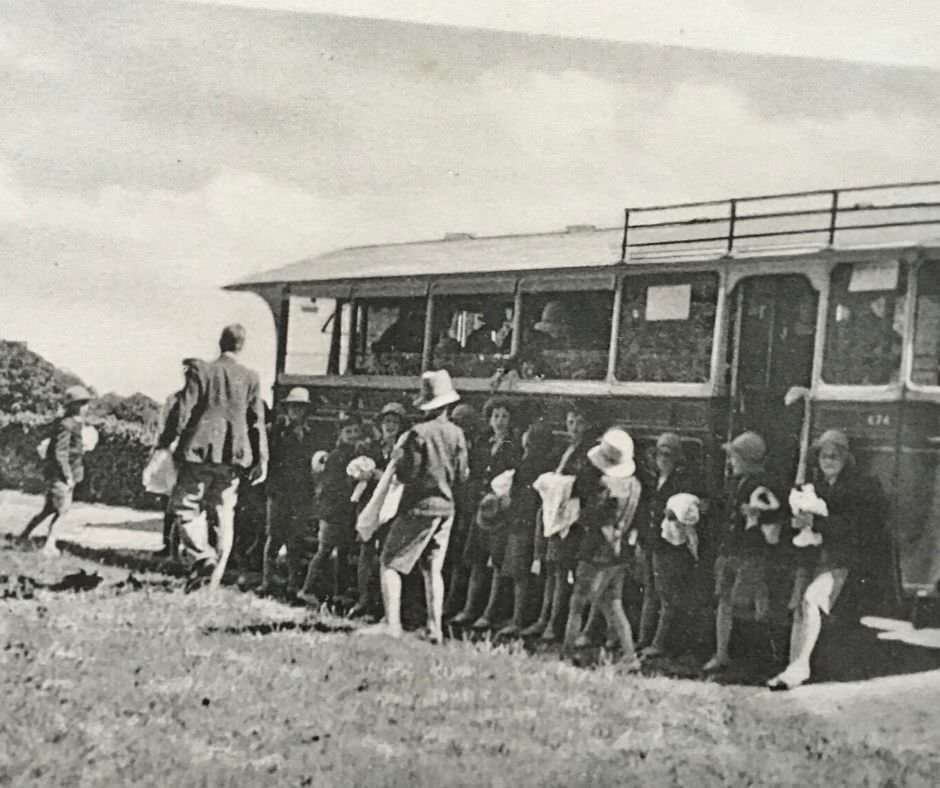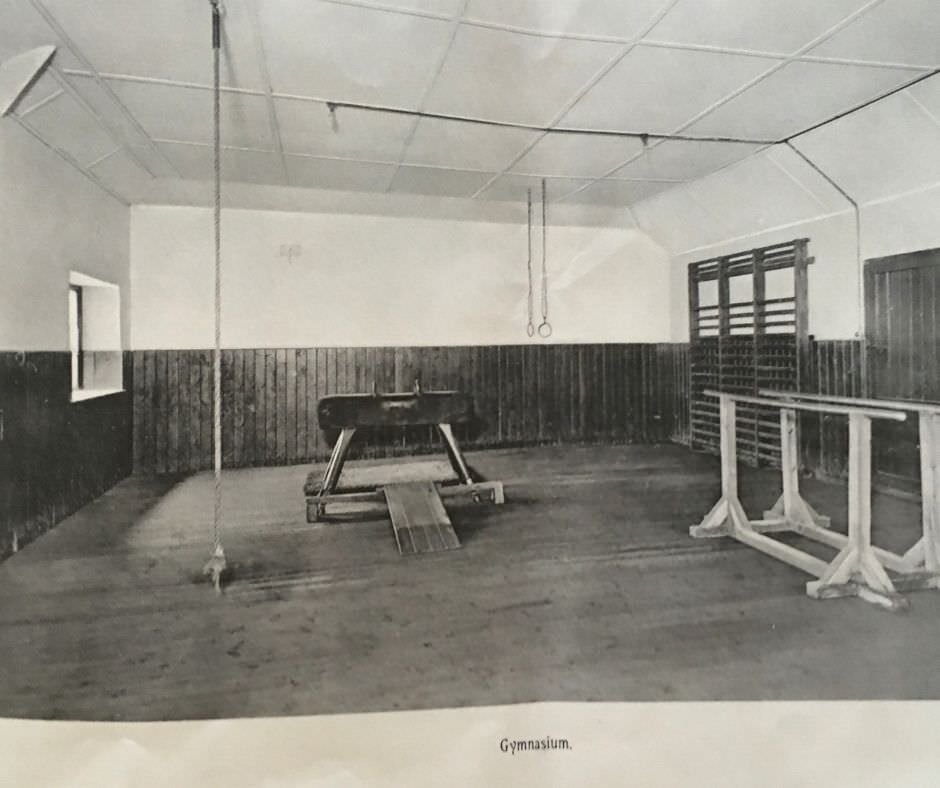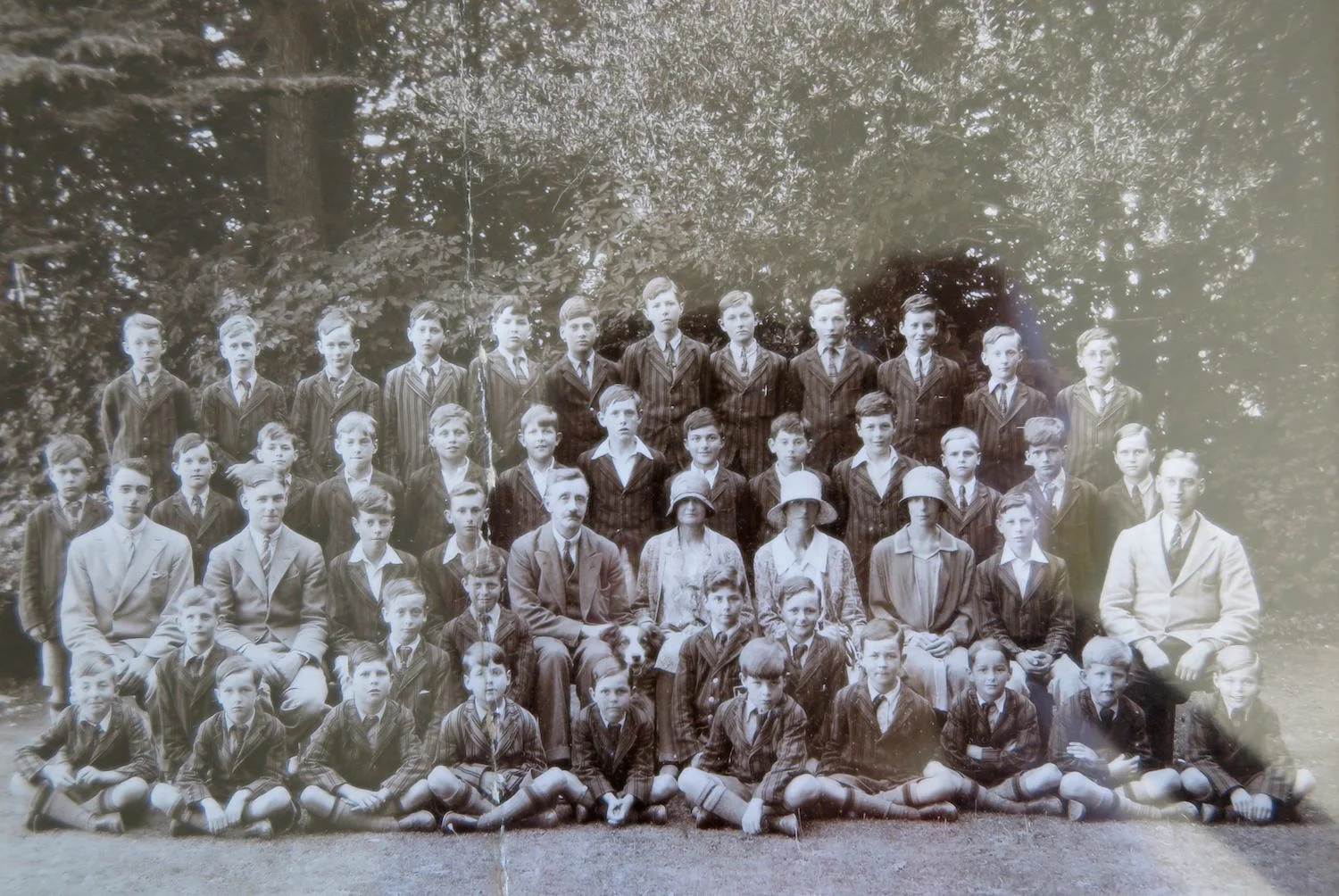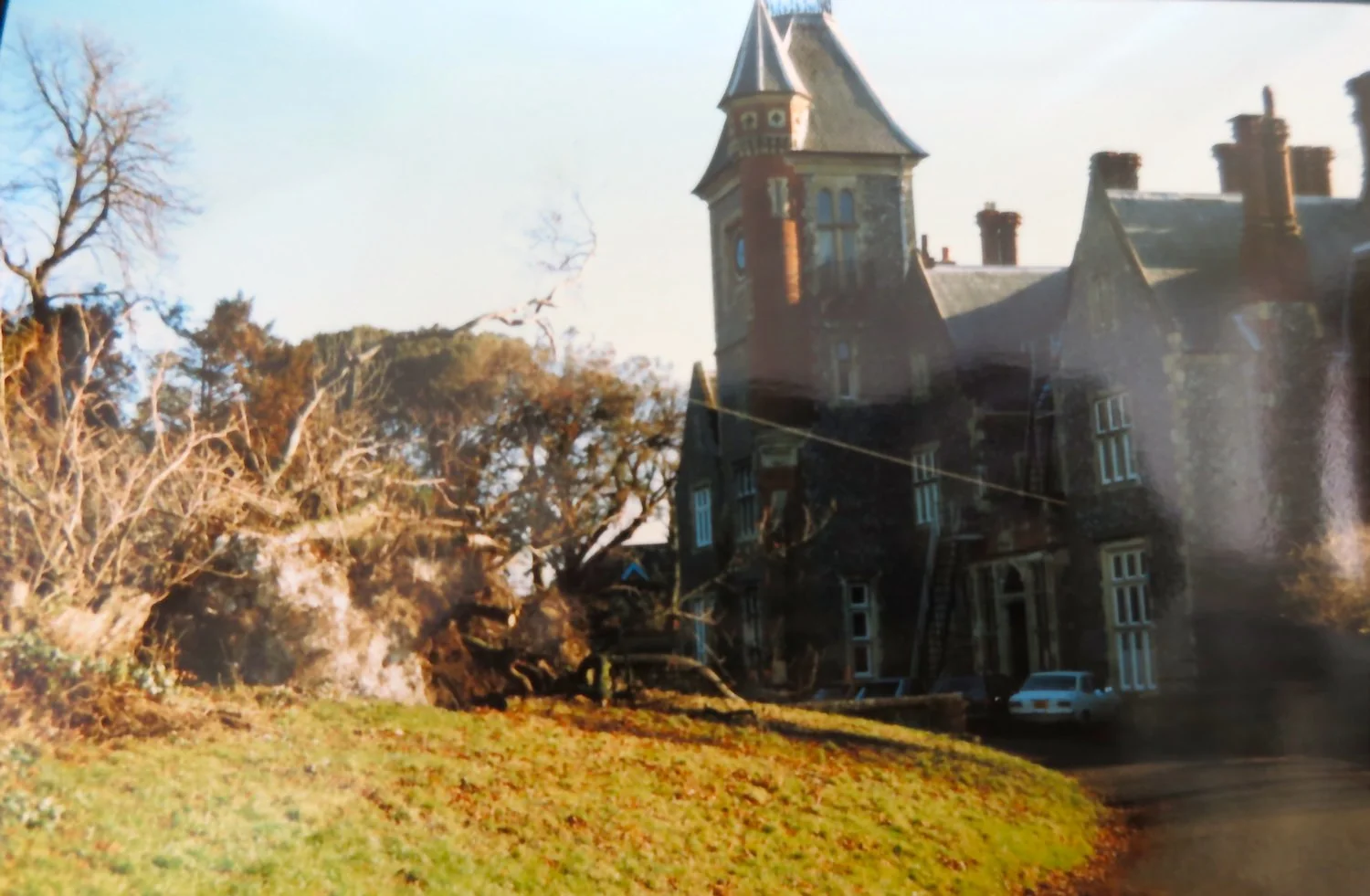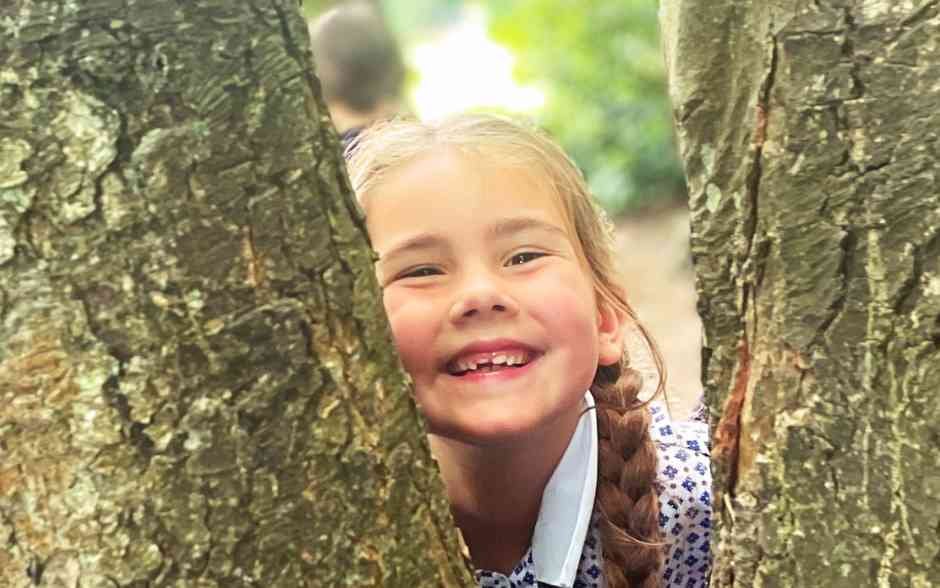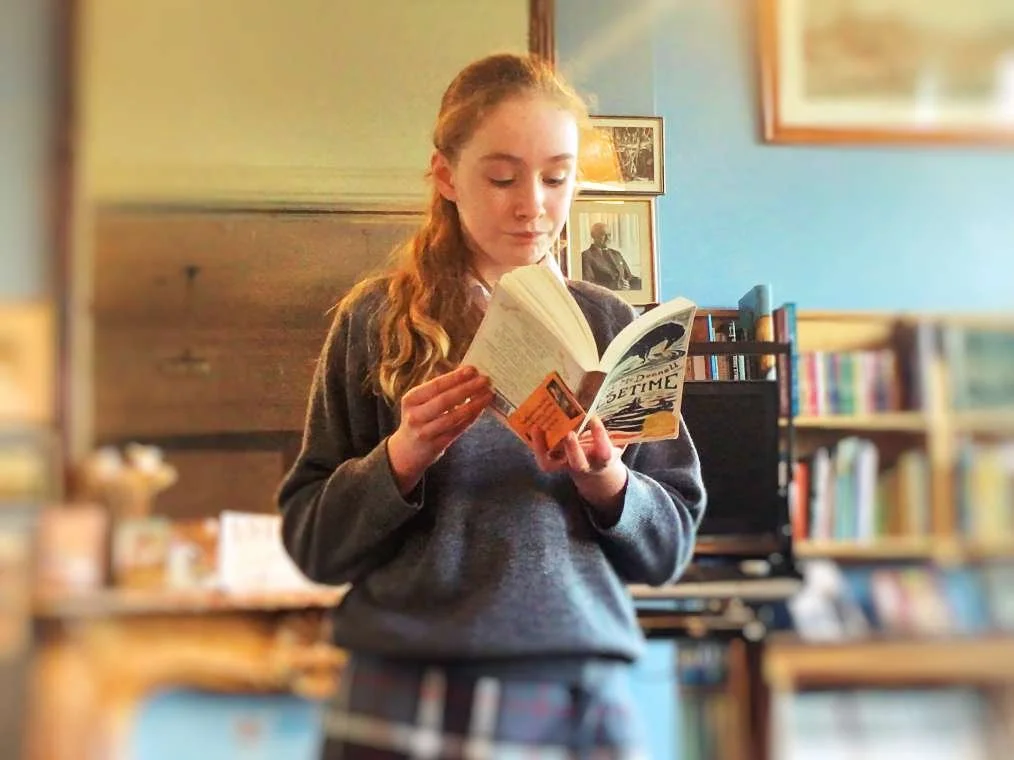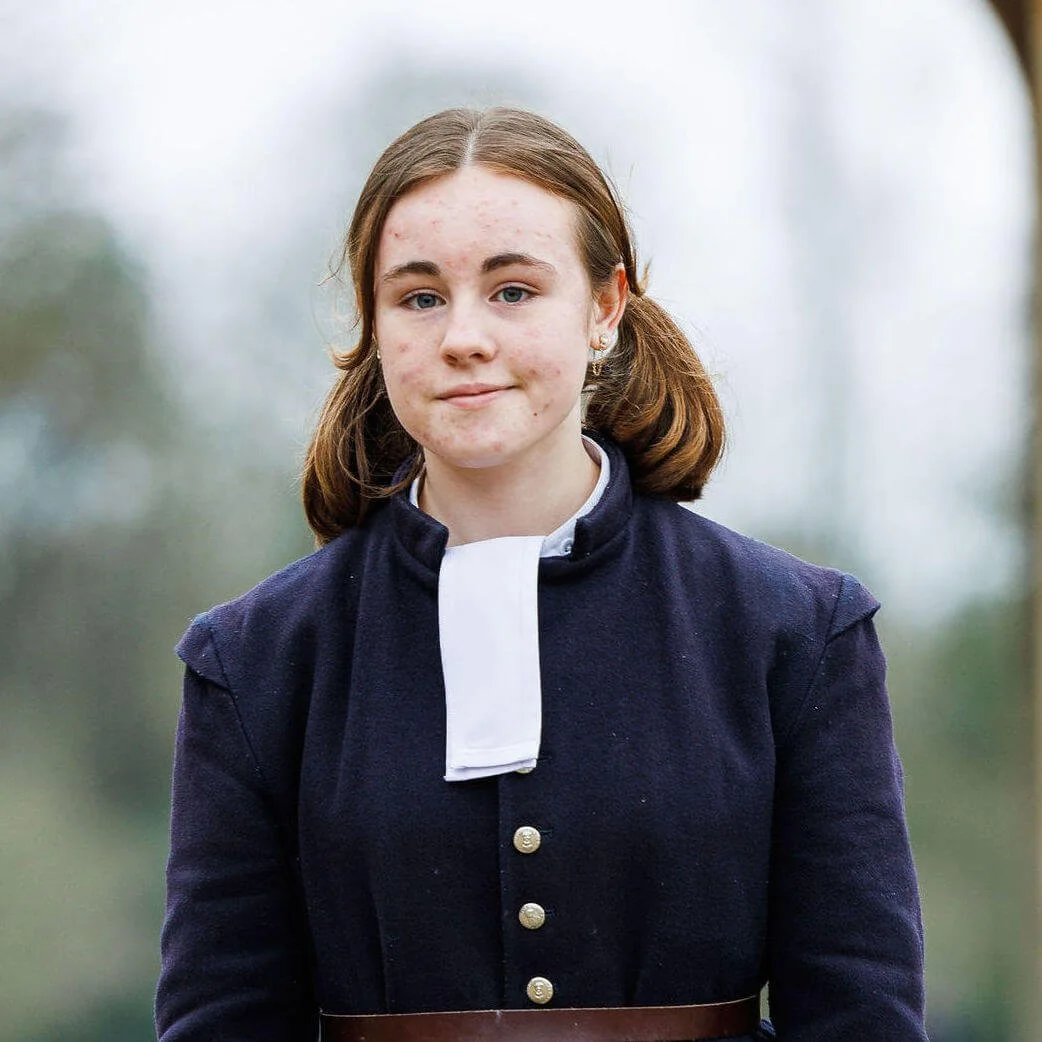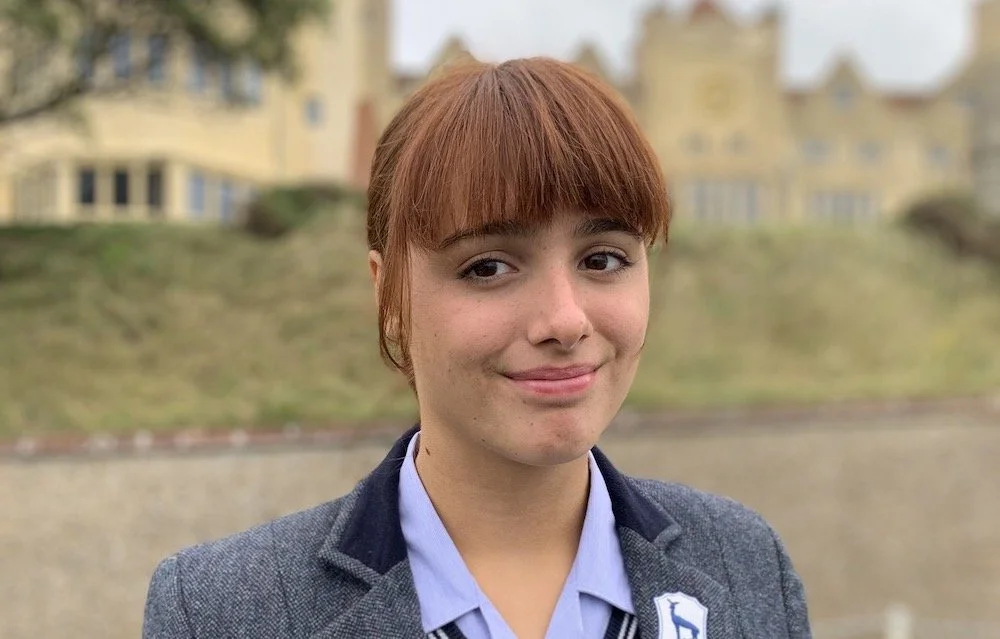Vintage prospectus reveals what life was like for 1930s boarders at Sompting Abbotts
/A not-seen-before series of photos of Sompting Abbotts Preparatory School from the 1930s has been uncovered in a vintage prospectus.
The prospectus booklet, bound in thick green card and tied with matching green cord, is undated and was published by P. A. Buchanan & Co, Thornton Heath, Surrey. It had been stored away unseen for years in a school cupboard.
Buchanan was a photographer who worked with schools and similar institutions, from about 1907 until the 1930s, typically providing the schools with a set of perhaps a dozen different postcards.
This prospectus is thought to date back between 90 and 100 years and the photos give a fascinating insight into what life was like at the school just before the Second World War. Today Sompting Abbotts is an independent school for boys and girls aged 2 to 13 years. But back then, it was a boys' boarding school.
The school in the 1930s "prepared boys between the ages of 6 and 15 for Scholarship and Entrance exams at the Public Schools and for the Royal Navy". Boys at that period were sent to boarding school from the age of 6 and only saw their families during the holidays. They addressed each other by their surnames: 'Jennings' or 'Jones' etc.
Needless to say, Sompting Abbotts is a very different school today!
Please see the comments on each photo for additional details.
This is the school’s Entrance Hall. The room on the right was the Principal’s Office (as it remains today) and the great grandfather clock is still in place.
Most of the portraits, which are those of the Tristram family who own the surrounding Sompting Estate, are still on the walls. The room to the left was the drawing room of the Headmaster’s wife and is now the school's library.
The Head was Mr A. C. Rutherford, who had founded the school in 1921. His son George would later become headmaster.
The shelves to the rear hold various African statuettes and the central table an ebony carved elephant. This was a time when the British Empire and the Commonwealth were a strong part of British identity and these ‘symbols’ were demonstrations of this.
On the walls are collections of butterflies within frames. This period was the golden age of lepidoptery – as the scientific study of butterflies and moths is known.
Was war brewing when this picture was taken? If you look out to sea, there appears to be what is a naval warship – perhaps a clue to the dating of the photo – was this taken in the run-up to WW2?
This is a view from the Library window at Sompting Abbotts. The raised garden urn is still there today and likely dates back to around the time of the house construction in 1856. It was made by the highly reputed garden ornament firm Austin and Seeley, The cold cast composition stone comprised a mixture of Portland cement, limestone, broken stone, pounded marble and coarse sand which was then cast in moulds.
Though their items were rarely stamped with the maker's mark, items by Austin and Seeley can often be identified by their quality which was recognised by Queen Victoria, who can be included among their patrons, and was renowned for their quality of finishing. The firm of Austin & Seeley which produced a large range of urns, figures and fountains, continued until at least 1872.
In the 1940s, the school pupils were evacuated on the Surrender of France. Some of the great trees are still standing; others were lost in the Great Storm of 1987.
The view to the south here looks clear and no signs of the conurbation that Sompting and Worthing has become can be seen. Sompting would have been a much quieter place then.
This is one of the classrooms situated at the school in a wooden building. This is still used today but has been divided into two rooms with a wall.
The 1930s was very much ‘talk and chalk’ education, with the teacher at the front of the class and the children sitting at desks facing the board.
Reading, writing and arithmetic (the Three ‘R’s) were very important, as was learning by rote. Times tables were learnt by chanting aloud in class and poetry such as Wordworths’ I wandered lonely as a cloud would be learnt by heart for homework.
Neat handwriting was seen as very important and practiced daily using ink pens dipped in the ink wells in the holes you can see in the desks.
Notice the big desk at the front – no doubt for the misbehavers!
A boys’ physical education class outdoors at Sompting Abbotts in the 1930s. Boys at this time received regular 'drill instruction' which was seen as beneficial as it provided healthy exercise and helped taught the boys discipline. Drills involved them following a series of athletic and calisthenic moves. These were done outdoors in the fresh air when weather permitted or in the gymnasium when not.
The school Dining Hall in the 1930s, clearly laid up here with white linen table cloths and flowers to impress for the prospectus.
In fact, normal school fare was very plain for the boarders: mutton, two veg and potatoes or pease pudding, cabbage and stew, followed by tapioca pudding, was a typical lunch. Ice cream would have been a great luxury! In this room the pupils still have their lunch each day today on tables set out in the room in a similar way.
One of the dormitories at Sompting Abbotts. The boys were required to make their own beds each morning and to wash using their own washbowl and towel. In winter, apparently, it wasn’t unusual for them to have to break a thin film of ice on the water to do this!
Today this room is that of Form IV (Year 4 – Mr Mac’s room).
The photographer clearly ‘posed’ the boarders for this shot for the prospectus. The pupils are in the boys’ billiard room and library, during an art class, and making a pencil drawing of the model ship on the table. Today, this room is the school’s Assembly Room.
Another dorm at the school, again with individual washstands and soap bowls. Boys at this period were sent to school to become young men and only saw their families during the holidays. It is reported that a 1930s headmaster from another boarding school, who, when asked by a mother why she couldn’t visit her boy every weekend, responded: "Madam, if you had a puppy would you cut off its tail an inch at a time, or all at once?" This room today serves as the classroom for Form III (Year 3), Mrs Kelly’s classroom.
This is the Boys’ Library with its billiard table, where the boys were able to relax and socialise together or do their prep at the big table. One of the great gilt mirrors above the fireplace is still in place at the school in the Dining Room. Today this room serves for school assemblies.
This is a picture of a school summer trip, presumably using a hired bus, as the boys are being dropped back at school.
Cricket on the lower cricket field (where it is still played today). Cricket was played and revered at boys’ boarding schools in the 1930s as a game of ‘Gentlemen’. It represented high English values, ie. fair play, discipline and gentlemanliness. The cricket playground was seen as a training field for professional careers and social leadership. Notice the master in his tweed jacket and bowler hat!
The gymnasium in the 1930s looks a fairly forbidding place! It is still used today as a gym but now has large windows facing south.
Athleticism, strength and agility was considered important for the boys' development. The school still has (and still uses!) the original leather bound pommel horse used for vaulting.
This is the Walled Garden or old kitchen garden at Sompting Abbotts, filmed here in winter but in summer it would have been full of vegetables and fruit growing, from the espalier fruit trees around its side and vast glasshouse.
Today, the Walled Garden is all lawn and looks very different! Now it is a beautiful green space, filled with apple trees and wooden play equipment for the Pre-Prep (Early Years) children.
But in the 1930s it would have served to grow food to supply the school by a team of gardeners. Headmaster Mr Rutherford's memoirs recall: "The walled garden contained a great number of fruit trees and vegetables. There were peaches, plums, pears, apples, figs and strawberries. There were sufficient vegetables and fruit to supply the whole school."
Water for the garden, and the house, was largely provided from a deep well that was pulled up by a horse who would walk in circles and pump it up to the tank in the tower of the main house. At a later date a petrol engine was installed to operate the pump.
You can still see the pulley that was mounted to the brick ceiling in the school’s tower.
The school still has the beautiful Edwardian greenhouse shown here and it is still used by the children for their extra-curricular Gardening Club and some of their produce is used for school lunches!
A view of the house in the 1930s from the south, taken in winter judging by the lack of leaves on the trees.
Listing for Sompting Abbotts Preparatory School in The Schools of England, Wales and Scotland (1931) This annual directory was much relied upon by parents at the time. It was published by Ed. J Burrow & Company Ltd, Imperial House, 30 Regent St, London, and cost 3/6 (three and half shillings to buy).
This is a picture of George Rutherford, the school headmaster, and son to its founder Mr A. C. Rutherford. George joined the school in 1930 after three years at Oxford and three years teaching in other preparatory schools.
He wrote in his memoirs: “The school carried on in the same way as most preparatory schools: scholarships, Common Entrance, matches and church on Sunday with my father reading the lessons.”
Staff and pupils of Sompting Abbotts Preparatory School during the 1930s. Founder Mr A.C. Rutherford is pictured in the centre of the second row; his son and later headmaster, George Rutherford, can be seen on the same row on the far right.
It was against the backdrop the Depression of the 1930s, provoked by the 1929 Wall Street Crash, that Mr A.C. Rutherford established his successful boys' boarding school at Sompting Abbotts.
He did this with the help of his wife and daughter, and especially his son, George Rutherford. George would be forced to leave the teaching profession with the outbreak of World War 2 but would later be invited to re-join the school as Headmaster under the Sinclair family, the present owners of the school. The Sinclairs relaunched the school in 1946 in post-World-War-2 Britain.




